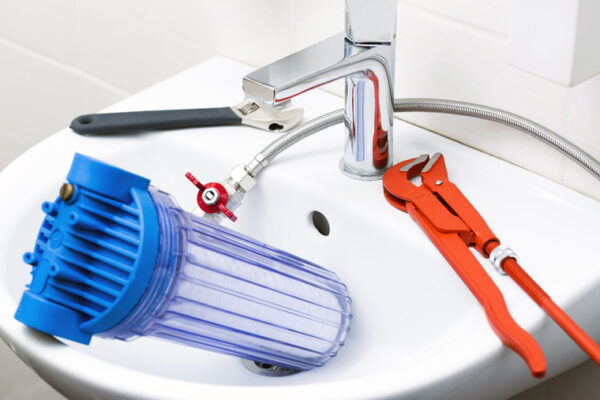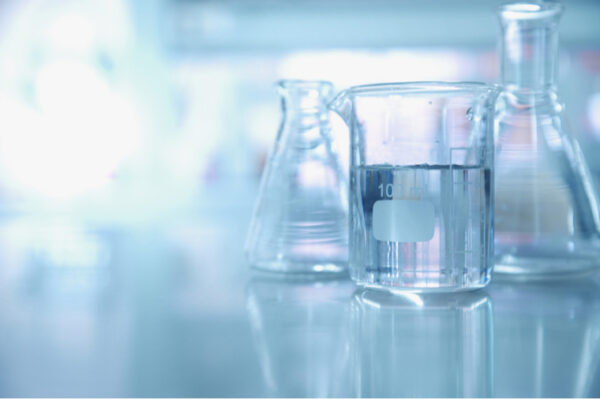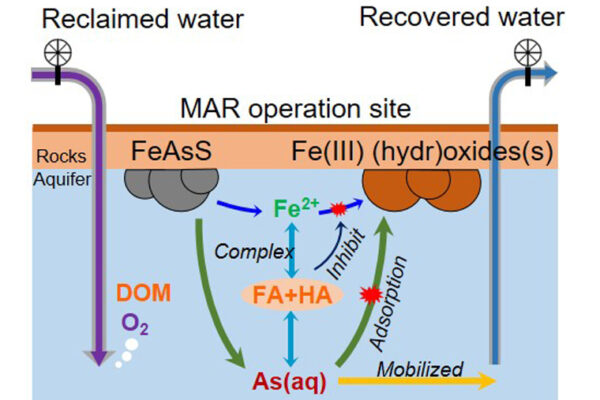About 80 percent of water systems across the country use a disinfectant in drinking water that can lead to undesirable byproducts, including chloroform. There is an alternative, but many cities have been afraid to use it.
That’s because in 2000, when the water authority in Washington, D.C., switched from free chlorine to chloramine, the nation watched as levels of lead in drinking water immediately shot up. They stayed up for four years while scientists determined the problem and implemented a solution.
In other cities that used free chlorine, Washington’s experience had a chilling effect; many have put off switching disinfectants, fearing their own lead crisis.
They may soon be able to safely make the switch, thanks to research from the McKelvey School of Engineering at Washington University in St. Louis. Researchers found that adding orthophosphate to the water supply before switching to chloramine can prevent lead contamination in certain situations.
The results of the study were published in Environmental Science & Technology.
Because of its malleability and longevity, lead was the preferred material for service lines, the pipes that deliver water from a water main to homes, for the first half of the 20th century. As the pipes corrode in the presence of free chlorine, a certain type of lead, PbO2, can build up on their interior surfaces.

That buildup typically isn’t a problem. In fact, so long as free chlorine is being used as a disinfectant, the PbO2 is actually a positive, according to Daniel Giammar, the Walter E. Browne Professor of Environmental Engineering at Washington University. This form of lead has a low solubility so it stays in a solid form on the pipes, instead of in the water.
PbO2 is not always so benign, however. “There is a potential risk because the solubility is only low if you keep using this type of chlorine,” Giammar said.
Switching to a different disinfectant such as chloramine — the mixture of chlorine and ammonia that Washington switched to in late 2000 — causes the lead to become water soluble. The PbO2 then dissolves quickly and releases lead into the water system.
In Washington, researchers determined that adding a particular phosphate, called orthophosphate, to the system would create lead phosphate. This new material was also low solubility, so again, the lead material began to line the walls of the pipes instead of dissolving into drinking water.
“We had to recreate the crisis, then watch the crisis happen and watch our proposed solution in parallel.”
Daniel Giammar
“But forming the new, low-solubility coating takes time,” Giammar said. In the case of Washington, “the lead concentrations took months to come down.”
The solution had been identified and implemented, but residents continued to deal with lead in their water for months. “Our overarching question was, ‘Would they have had a problem if they had implemented the solution before they made the chlorine switch? What if they added orthophosphate before, as a preventative measure, and then they switched the disinfectant? Would they have had a problem?’”
Recreating Washington water
To find out, the researchers had to recreate 2000 in their lab. “We had to recreate the crisis, then watch the crisis happen and watch our proposed solution in parallel,” Giammar said. They sourced lead pipes, then recreated Washington water.
First author Yeunook Bae, a PhD student in Giammar’s lab, looped the water through a six-pipe system with free chlorine for 66 weeks to get the lead scales to form. Once they approximated those found in Washington, the pipes were divided into a study group and a control group.
Researchers then added orthophosphate to the water in three of the pipe systems, the study group, for 14 weeks.
Then, as the Washington water authority had done, researchers switched from free chlorine to chloramine in all six systems, looping the water through the pipes for more than 30 weeks.
The lead on the pipes that did not receive orthophosphate became soluble, as it had in Washington, leading to high lead levels in the water. In the pipes to which orthophosphate was added, “levels went from really low to still quite low,” Giammar said.
The experimental setup was designed to let researchers remove small sections of pipe without disturbing the system. That allowed them to see just how quickly the switch to chloramine affected the system.
The regulatory level set by the EPA for lead in drinking water is 15 micrograms of lead per liter of water.
Within five days of the switch, lead levels in the control pipes — those without orthophosphate — rose from five to more than 100 micrograms/liter. During the subsequent 30 weeks, levels never fell below 80 micrograms/liter.
In water treated with orthophosphate, levels remained below 10 micrograms/liter for the duration of the experiment.
The Washington University team also learned something else: Because of the high levels of calcium in Washington’s water, adding orthophosphate did not result in a pure lead phosphate, but a calcium lead phosphate.
This surprise points to the uniqueness of each situation. Those who oversee water systems and are concerned about switching disinfectants can not only benefit from this study, according to Giammar, but also from their own studies, tailored to their specific water and environmental conditions.
Nevertheless, this finding can help guide decisions in the roughly 80 percent of American water systems that are still using free chlorine, including Chicago and New York City.
“Our next big step,” Giammar said, “is making sure places that are thinking about switching disinfectant know that the option is there to do it safely.”



